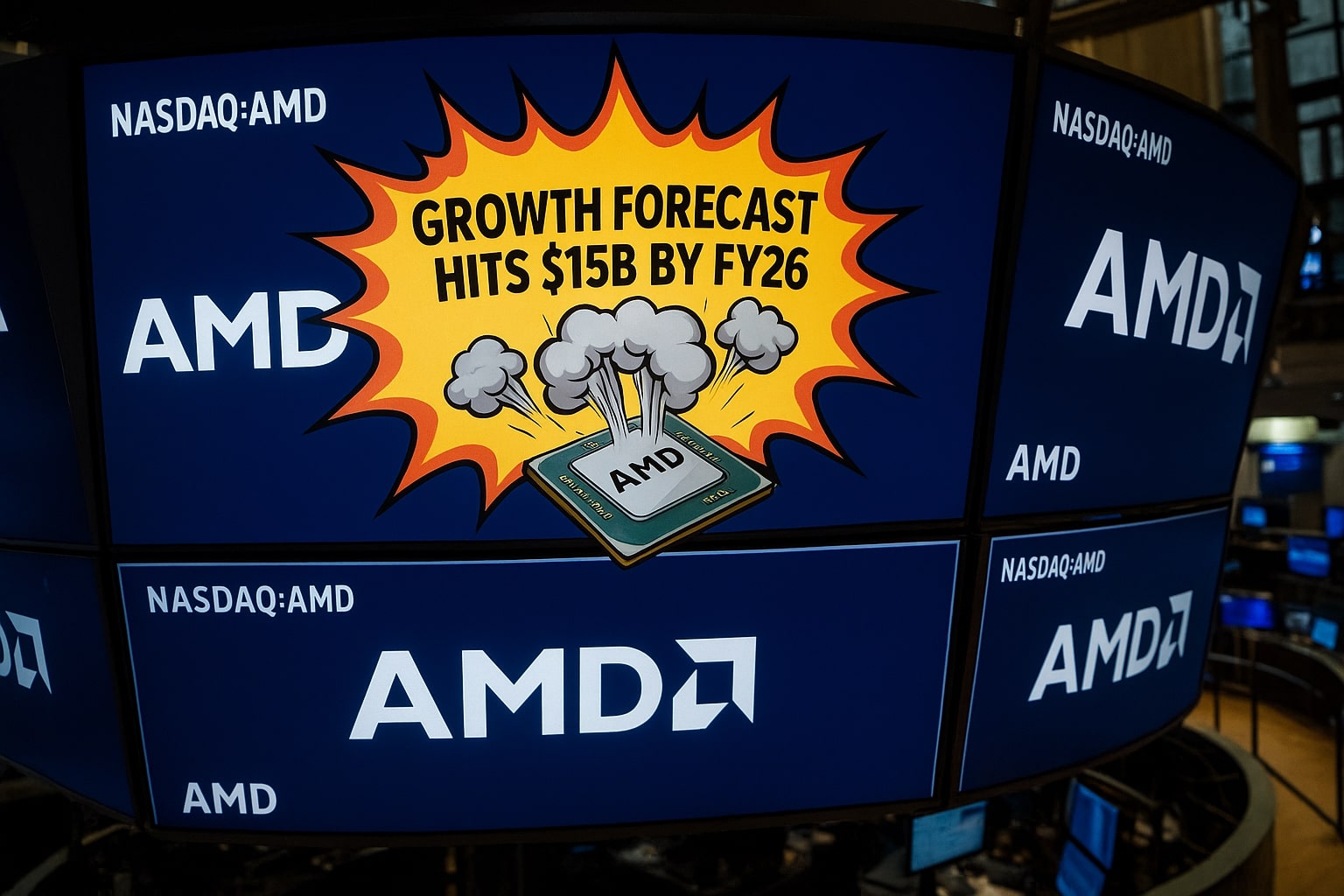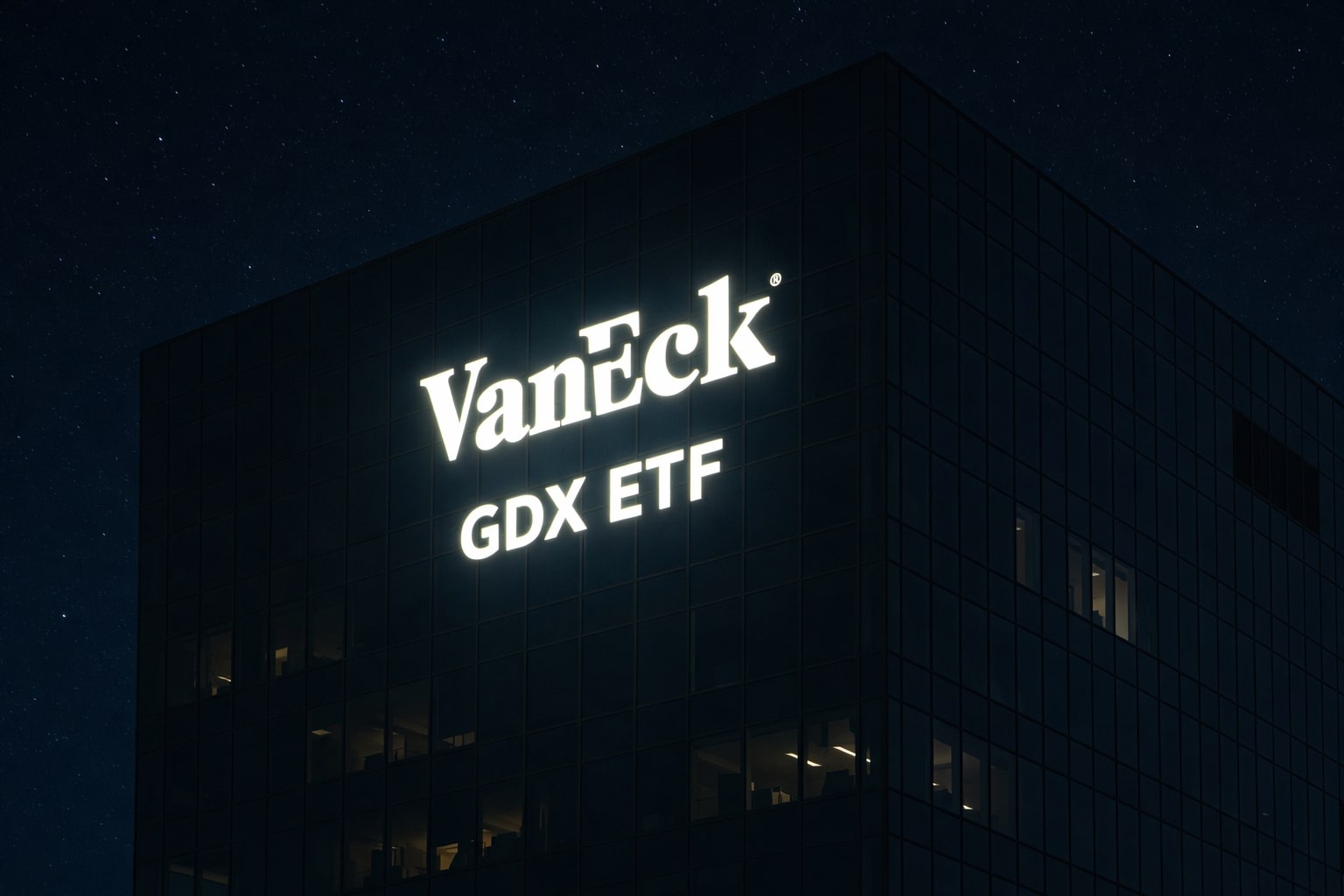NASDAQ:AMD Riding AI Tides as Undervalued Titan in Transition
AI Revenue Explosion Makes Data Center the Crown Jewel of AMD’s Business
Advanced Micro Devices (NASDAQ:AMD) has emerged as the dark horse in AI infrastructure, propelled by a breakout performance in the Data Center segment, which posted $3.7 billion in Q1 2025 revenue, a +57% YoY surge. That alone accounted for nearly half of AMD’s $7.44 billion total quarterly revenue, which was itself up 36% year-over-year. The rally in this division isn’t just about scale—it’s about performance leverage. Operating income in the segment jumped 72%, marking AMD’s strongest margin expansion in years.
What’s driving this? AMD’s Instinct MI series—particularly MI300X and MI350—is now entrenched in the tech stacks of hyperscalers like AWS, Google, Oracle, Alibaba, and Tencent, with more than 35 cloud platforms running Instinct GPUs in production. These accelerators are powering generative AI, inference, recommendation engines, and large-scale model training. AMD’s MI325X ramped sharply in Q1, while MI350 shipments began mid-2025, unlocking a new revenue runway. AMD’s roadmap is aggressive: MI400 lands in 2026 with 432GB HBM4, 40 petaflops FP4 compute, and a blazing 19.6TB/s memory bandwidth.
Reopened China Channel: A Silent Catalyst with $6 Billion Upside
The U.S. Commerce Department’s decision to approve AMD’s MI308 chip exports to China reignited a suppressed revenue engine. China previously accounted for 24% of AMD's revenue in 2024 (~$6.2 billion), and the MI308’s reinstatement erases what was forecasted as an $800 million inventory hit.
This policy reversal came in lockstep with the greenlight for Nvidia’s H20 chips. But AMD’s edge lies in its open software architecture and aggressive pricing, which is now gaining favor in cost-sensitive Chinese data centers. In a market shifting away from Nvidia’s closed ecosystem—amid pressure from Huawei—AMD is filling gaps, not just surviving.
China’s AI chip market is projected to hit $50 billion by 2026, and AMD is staking its claim. CEO Lisa Su stated that even amid export controls, China was already embedded in AMD’s $500 billion total addressable market forecast by 2028. While Nvidia dominated early-stage AI compute in China, AMD’s presence is structurally ramping, not reacting.
Product Efficiency Becomes a Strategic Wedge in Energy-Constrained AI Markets
In a world where energy costs are becoming a bottleneck for AI scalability, AMD’s efficiency-first approach is resonating. The MI300X architecture delivers higher performance-per-watt versus Nvidia’s H100 and Blackwell (H200), which are more power-intensive despite architectural optimization. AMD's chiplet-based design—featuring 192GB of HBM3 and 5.3TB/s memory bandwidth—outperforms Nvidia’s monolithic approach under certain AI workloads.
Moreover, the newer MI350 introduces support for FP4 and FP6 data types, drastically boosting large language model (LLM) efficiency. While Nvidia still dominates mindshare, OpenAI, along with 6 out of the top 10 global AI firms, are now integrating AMD accelerators into their compute fleets. MI355X, AMD's cost-performance breakthrough, reportedly delivers 40% more tokens per dollar vs. Nvidia, although exact pricing remains confidential.
Forward Growth Metrics Price AMD at a Discount—Despite 43% Rally
Despite the AMD share price jumping 43% since April lows, valuation remains compelling relative to its sector and its AI peers. The forward PEG ratio stands at 1.31x, undercutting the 1.85x sector median by ~30%, signaling that growth has not been fully priced in. Compare this to Nvidia’s PEG of 1.88x and Broadcom’s higher premium, and it’s evident AMD is priced as the underdog but executing like a leader.
Even as the EV/EBITDA forward multiple climbs toward ~36.8x, the valuation becomes justifiable in light of the 230% EPS CAGR forecast over the next 3–5 years. That’s more than 16x the sector average of ~14.4%, according to consensus projections. Add the 18.78% forward revenue growth—well above the sector median of 7.17%—and the disconnect between price and potential becomes hard to ignore.
The Tariff Sword Still Hangs—but AMD’s Resilience Is Embedded
Tariffs remain a tangible threat. A renewed trade conflict or license revocation could erode Chinese momentum. AMD’s exposure to China is material: roughly 24% of 2024 revenue, and a prior export halt cost the company $1.5 billion in setbacks. However, AMD’s roadmap, diversified TAM, and deeper regional partnerships buffer against these macro shocks more effectively now than in early 2024. The company’s insider base has responded positively, as shown in its latest insider filings on TradingNews Insider Activity, reflecting internal confidence.
Institutional Sentiment Flips as Analysts Rush to Reprice AI Potential
Institutional sentiment has flipped bullish. Bank of America reaffirmed a Buy, raising its price target to $175, while HSBC doubled its PT to $200, citing underestimated AI monetization. The latter now forecasts $15.1 billion in AMD AI revenue by FY26, 57% above prior consensus, validating the pricing power of MI350 and early interest in MI400.
This isn’t just a software-locked Nvidia game anymore. AMD is winning contracts through custom AI chip partnerships with hyperscalers who value architectural flexibility. AMD’s ecosystem is opening doors for modular compute across data centers, embedded systems, and edge AI.
Technical Tailwinds Confirm Momentum—Support Zone Holds Firm at $125
Technically, AMD is building a strong V-shaped recovery, bouncing off April lows of $78/share and surging above $125–$126, where the EMA21 now acts as strong support. The RSI is trending near 58, and MACD crossed bullish, pointing toward momentum continuation. Near-term dips toward $128 could offer reentry levels for investors seeking to average down or reestablish exposure.
Track the real-time chart at AMD Chart on TradingNews.
AMD’s Roadmap Is Not Just Catching Up—It’s Reshaping the Stack
Beyond the MI series, AMD’s Zen 5 EPYC CPUs and next-gen Ryzen GPUs are gaining in commercial traction. AI server architecture is shifting toward CPU + AI accelerators, not just CPU+GPU—precisely the lane AMD is targeting. The MI400 Series, launching in 2026, promises full rack-level performance, appealing to large-scale distributed inference needs.
What differentiates AMD’s roadmap is the breadth of interoperability. Unlike Nvidia, which remains tightly bound to its software stack, AMD is unlocking collaborative paths with cloud firms, LLM developers, and infrastructure providers seeking custom silicon. This flexibility positions AMD to win share not only from Nvidia, but from closed-platform players across the supply chain.
Verdict: NASDAQ:AMD Stock Is a Strong Buy
Based on valuation compression, forward growth acceleration, AI product leadership, and the reinvigorated China sales channel, NASDAQ:AMD is a Strong Buy. While Nvidia remains the undisputed AI monarch, AMD is no longer merely a challenger—it is a rapidly scaling strategic pillar. With the Instinct series penetrating deep into hyperscaler deployments and MI400 looming large, AMD’s rally isn’t over—it’s early.



















